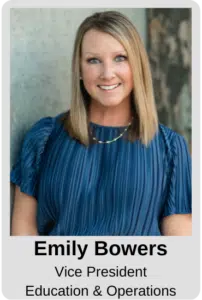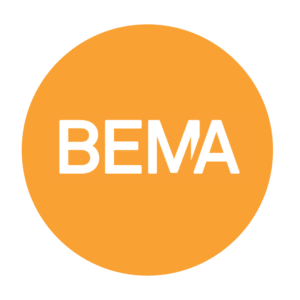07 Mar Thought Leadership: Tracking Trends in DEI, Flexibility, and Benefits

A recent article from the Society for Human Resource Management (SHRM) shed some light on a few workplace trends that are important for all industries to take into account this year. Not surprisingly, the article highlighted diversity, equity, and inclusion (DEI) efforts, but it also made some important points about flexibility and the need to understand the changing shape of families.
While the baking industry is somewhat unique in that our opportunities for offering remote work can be limited at the manufacturing level, I thought there was quite a bit to be learned from these trends, so I asked Jessica Zasadni, director of human resources for JLS Automation, and Christy Pettey, chief people officer for Kwik Lok, for their perspectives on these topics.
![]()
Diversity, Equity, and Inclusion
According to the SHRM article, volatility in the economy may lead to more layoffs this year, which can disproportionately affect minorities and women. During the pandemic, we learned that people of color were more likely to have lost their jobs than white workers, and in the article, Shelley Zallis, founder and CEO of equality services company The Female Quotient, argues that bias can result in women and minorities being first on the cut list when layoffs come around.
Pettey says Kwik Lok has recognized these concerns and taken steps to overcome them.
“I think the overall theme of the SHRM article – that efforts to create equitable employment processes are absolutely crucial to ensuring that females and minorities aren’t disproportionately impacted during hard times – is one of the key drivers that was our early focus,” she says. “This is why we changed our recruiting, performance, and compensation processes. A version of that is still a key driver, but it’s more that those efforts are crucial to ensuring that females and minorities are able to thrive in our organization.”
Zasadni believes one of the keys to retaining minority and women workers lies in making them feel like an important and respected part of both the workplace and the community where they live and work.
“We continue to grow and expand our workforce and value the diversity of experiences and backgrounds joining our team,” she says. “We’ve been utilizing our Living and Learning program to encourage folks to interact and connect with one another, volunteer in the community, and hear from speakers on a variety of topics from social issues to history to science. We encourage our employees to get involved with the community and to learn and appreciate each other.”
Another important part of any DEI effort is the ability to track the data surrounding hiring, promotion, and layoffs. It’s impossible to define progress in this area without concrete data.
“Regarding DE&I reporting practices, we’ve been working on capturing more and better data to be able to measure our progress,” Pettey says. “Unlike a lot of the tech industry who has more data than they know what to do with, we didn’t actually track a lot of information. The past couple of years have been spent creating the processes to capture the pieces of information we want to track and implementing databases to hold and analyze the information.”
 Workplace flexibility
Workplace flexibility
In the post-pandemic era, there has been a lot of talk about the best working options for both employees and employers. Do you make everyone come to the office or let everyone work from home? Or do you offer a hybrid option?
The four-day workweek has also become a topic of discussion after a study of 900 workers at 33 businesses revealed that after six months none of the companies in the study were returning to a five-day workweek. The options for offering flexible schedules seem endless, and workers are increasingly expecting to have that flexibility.
But how does that apply to the baking industry where flexible options can be difficult to create for front-line shift workers?
“Regarding flexibility, we’ve created a flexible work process for departments to identify opportunities that can be offered to their employees,” Pettey says. “I think this can be extremely valuable to employees, but it’s a big change and takes a lot of adjustment not only for schedules/processes but for how the team interacts and sometimes how they are managed. We definitely have more remote opportunities than we ever did before, asking the question of whether an exempt position is one that has to be done on site or not.”
Zasadni says JLS Automation is also looking for areas where they can create flexibility for their workforce.
“As you may be aware, manufacturing environments are very different than a service business environment,” she says. “In an engineered-to-order manufacturing environment, many jobs are hands on using tools and equipment that can only be found in the workplace. It is also a very team-centered environment as work products are often interactive and flowing back and forth across the organization.
“Because of this type of work environment, it is often difficult for manufacturing environments to adopt a fully remote or fully hybrid workplace. Because we value our people-focused culture, we are beginning to introduce some hybrid work where it makes sense to do so, recognizing that employees often value this as a benefit. We also recognize that a portion of our workforce are not in positions that afford a hybrid schedule, and we need to ensure that those employees continue to be fully supported and do not get disrupted by allowing a hybrid schedule. It is a delicate balance and one that we have decided to venture into this year.”
 Rethinking benefits
Rethinking benefits
The shape of families has changed in the past few decades, but often the benefits companies offer have not shifted to meet their needs. Understanding the make-up of the workforce at a company should have an impact on the benefits that company offers.
The SHRM article pointed out the need for more benefits aimed at single-parent families as well as for more generous maternity and paternity leave policies and help with infertility treatments and adoption costs.
Zasadni says they try to take the unique make-up of their workforce into account when creating programs and benefit offerings.
“We have also taken a strategic view of our benefit packages this year so that we can begin to tailor our benefits to our workforce needs in future years,” she says. “This year we are introducing a wellness program to supplement our onsite gym and fitness offerings to meet the diverse needs of the workforce. By providing programs during the workday as well as before and after work, we hope that employees have an opportunity to take some time for themselves.”
Pettey says taking control of their medical benefits through self-insuring their employees has made it easier for Kwik Lok to tailor their benefit packages to their workforce’s needs.
“Regarding benefits, we have been slowly adding options year by year to watch their impact on our medical fund (we’re self-insured),” she says. “It’s been great to be able to add different types of coverage that adds value to employees in different situations. Being self-insured has let us do this without even raising insurance costs for our employees, which is pretty amazing.”
 Every company is unique
Every company is unique
While understanding workplace trends when it comes to DEI initiatives, flexible workweeks, and benefits is an important piece of creating the best workplace possible, don’t try to shoehorn a new policy or benefit into a company where it doesn’t fit.
Doing something that doesn’t make sense for your company just because it’s the trend will only hurt in the long run. Creating a diverse, flexible, content workforce takes more than just borrowing ideas and policies from trend watchers and other companies. Companies need to be intentional about first understanding their own workforce and the company’s needs before jumping on any workplace trend.
Zasadni sums it up perfectly.
“From an HR leadership perspective, it is much more important to ensure we are tailoring programs and activities for our employees’ needs rather than implementing programs for the sake of checking a box.”





No Comments